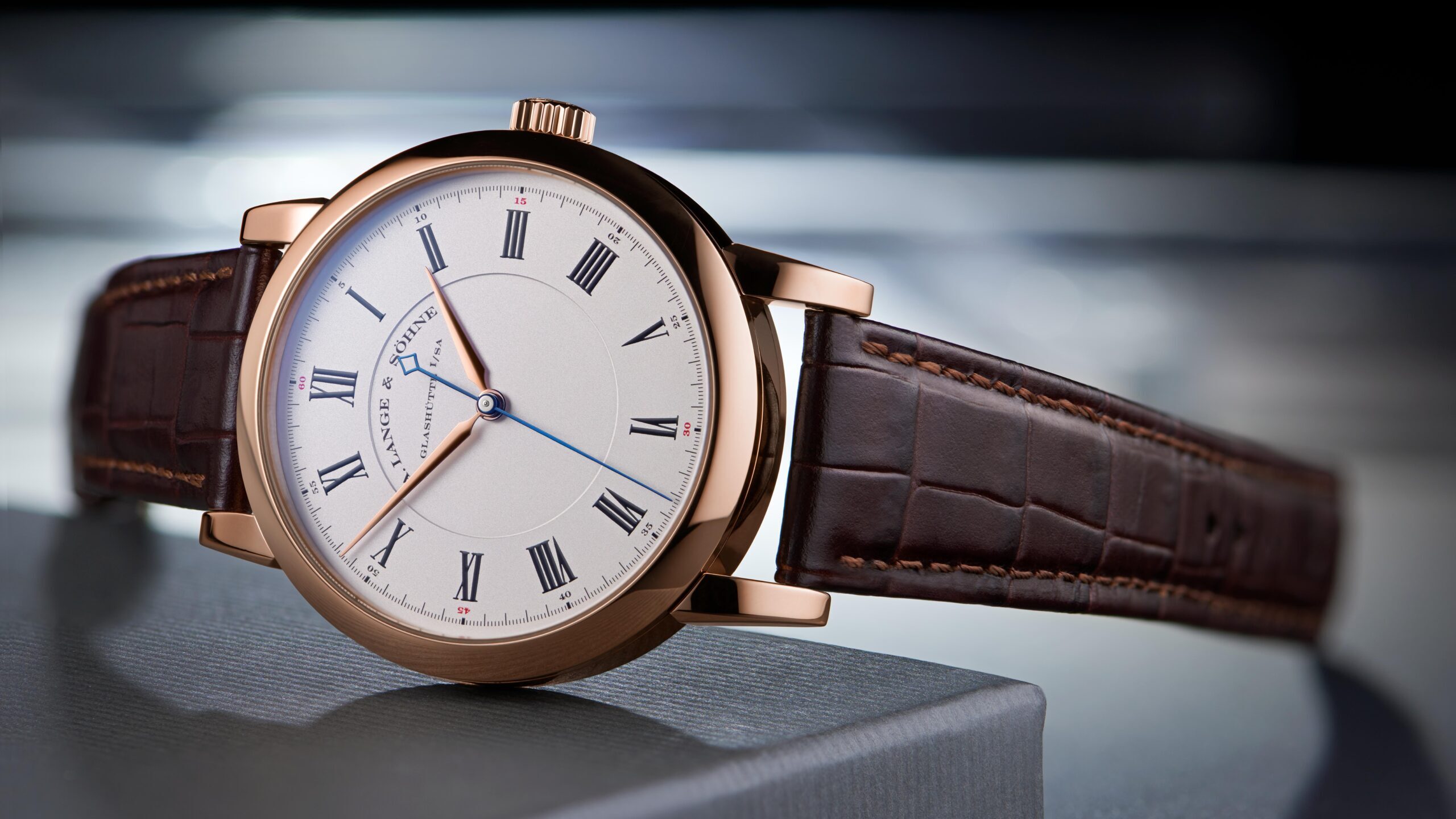
A. Lange & Söhne Richard Lange
In-depth look – May 2020
For once, I’d like to put TLDR at the beginning of the article with a quote from a friend on Richard Lange. The rest of the article expands on the quote, tries to answer the question why?
Lange makes some of the most incredible complicated watches in the world. But this particular watch reminds me of the brand heritage: accurate, sturdy, simple, and elegantly finished. And a watch for every day. Horology does not come higher than this model.
Indeed, Richard Lange is a model that encapsulates the brand’s heritage as very few others can, in a way that is harmonious, coherent and just beautiful.
Quick Facts:
- Introduced in 2006
- The second watch to utilize the brand’s in-house balance spring and Wheel
- Named after the brand’s founder’s son: Richard Lange
- Available in platinum, gold
- Measures 40.5 mm in diameter and 10.5 mm in thickness
Lange made and continues to make some astonishingly complicated pieces since the very beginning in 1994. Think of the journey spanning from Tourbillon Pour le Mérite to Datograph to Double Split… But as one old time Purist said: Not everyone is a Silicon Valley entrepreneur to afford such complications and we had enough with 40 mms watches housing 20mms movements.
Indeed, a brand needs coherent offerings throughout different ranges in different style that is built on the same core. Albeit astonishing, the models mentioned above were utterly expensive (for many) and some just would like to feel that A. Lange & Söhne quality with a manually-wound, time-only model on the wrist.
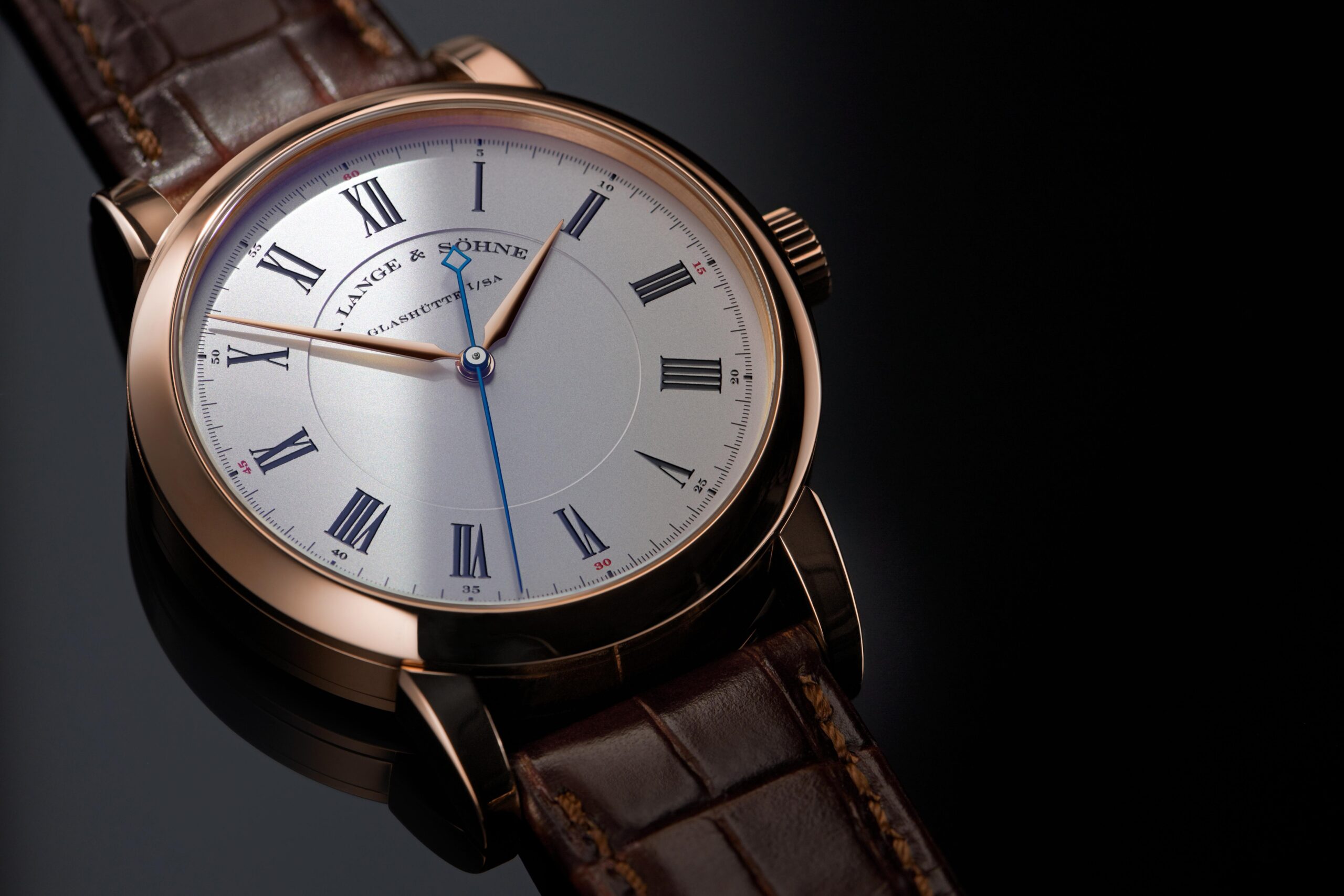
Richard Lange in pink gold. Courtesy of Lange Uhren GmbH
Simplicity is the ultimate sophistication says Leonardo Da Vinci. Even though not everyone is able to discover the depths of crafting something simple, yet strongly delivering its message – Richard Lange does it just right. The watch is a testament to the brand’s founder Ferdinand Adolph Lange’s first born son, Richard Lange, and all the watch cares about is to show you the time in the simplest way, with a precision of 1/6th of a second while at a glance you can immediately grab that it is an A. Lange & Söhne.
As with the 1815 collection, I think it is a must to understand the heritage behind the Richard Lange name in order to fully appreciate the collection. Hence, let’s take a journey to the 19th century Glashütte, and have a closer look to the eponymous inspiration of the collection.
Richard Lange - A Life Devoted to Precision
Richard Lange was the second-born of the brand’s founder, Ferdinand Adolph Lange and was born in 17th December 1845 – only ten days after his father built what was to become the biggest watchmaking dynasty of Germany. He was trained as a watchmaker and since young age showed a great promise. It did not take much long for him and his younger brother Emil to join the company in 1871 and A. Lange & Cie was re-named as A. Lange & Söhne (sons).
During the brothers’ time, A. Lange & Söhne received numerous patents and started making complicated pieces such as split-seconds chronographs or dead-beat second watches with the mastermind being Richard Lange. Alas, in 1887 he had to step down from the company work due to health reasons; but never gave up on watchmaking.
In 1891, he was elected to serve as the chairman of the board of the Glashütte Watchmaking School by replacing his brother Emil Lange. From here on, we see Richard Lange acquired numerous patents, mainly focused on chronometric performance; hence, escapements, carousel and balance springs. However, his most important patent arrived in 1931, only a year before his passing: Beryllium mixture to balance springs, which later led the way to the invention of Nivarox springs.
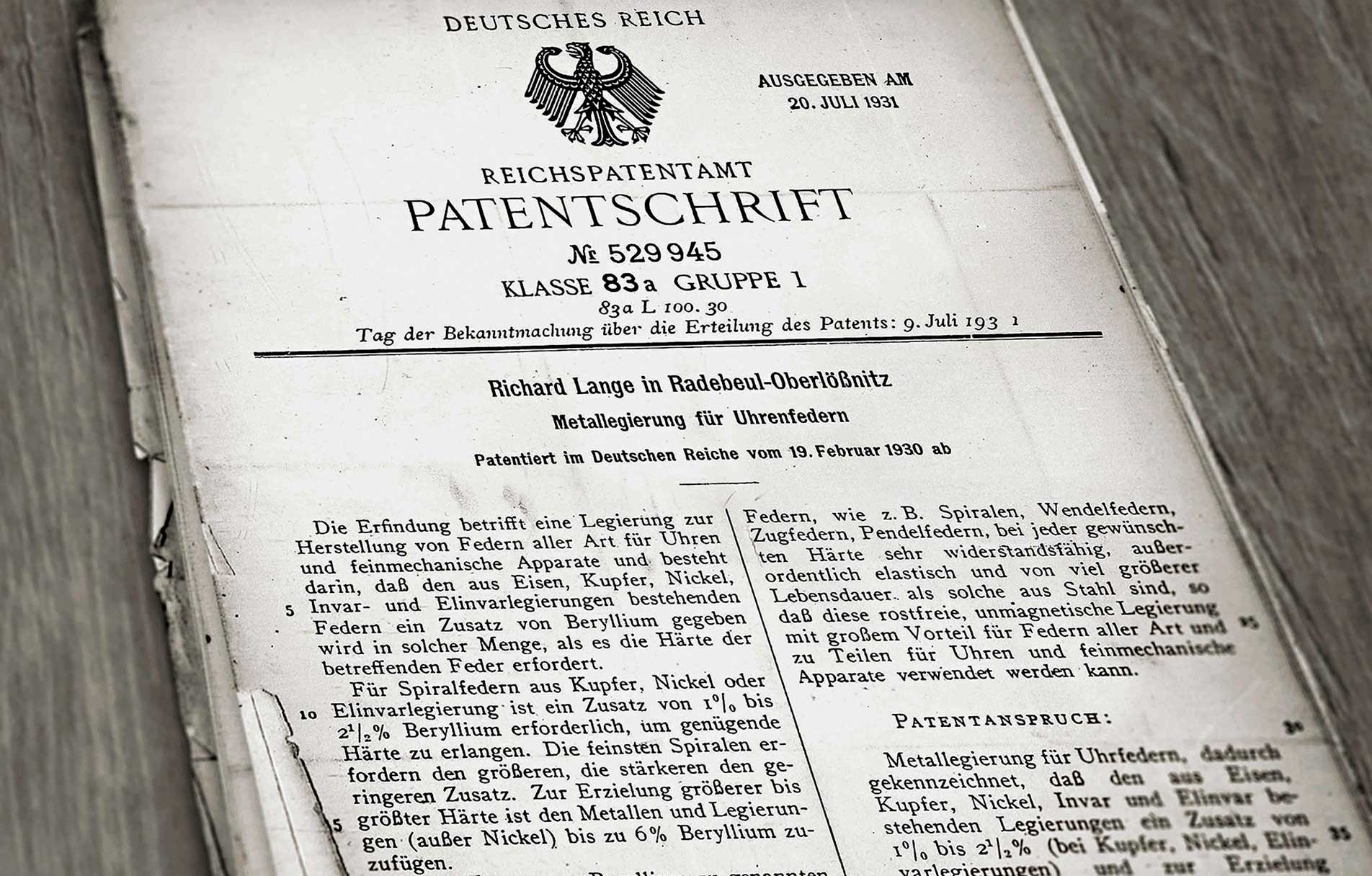
Richard Lange’s balance spring patent. Courtesy of Lange Uhren GmbH
Richard Lange devoted his life to the improvement of timekeeping. I can only imagine how hard of a task it was to revive such a legacy and adapt it into modernity. Fortunately, the modern Richard Lange collection, at least the time only variant that is discussed here, fulfills such a heritage perfectly.
Richard Lange collection was introduced in 2006 and so far, Lange produced the model in all four precious metals; white (232.026), yellow (232.021), pink gold (232.032) and platinum (232.025).
It measures 40.5 mm in diameter and a proportionate 10.5 mm in height. As with all other A. Lange & Söhne watch cases, the Richard Lange’s case is constructed on three levels – bezel, case band and case back ring. While the bezel and case back are beautifully polished, the case band is brushed – with the exception of the pink gold version. Conceived by Blümlein in early 90s as a mean to differentiate the watch cases from Swiss as well as to attain a more robust, engineered look; the signature, beautifully notched and angled Lange lugs are present.
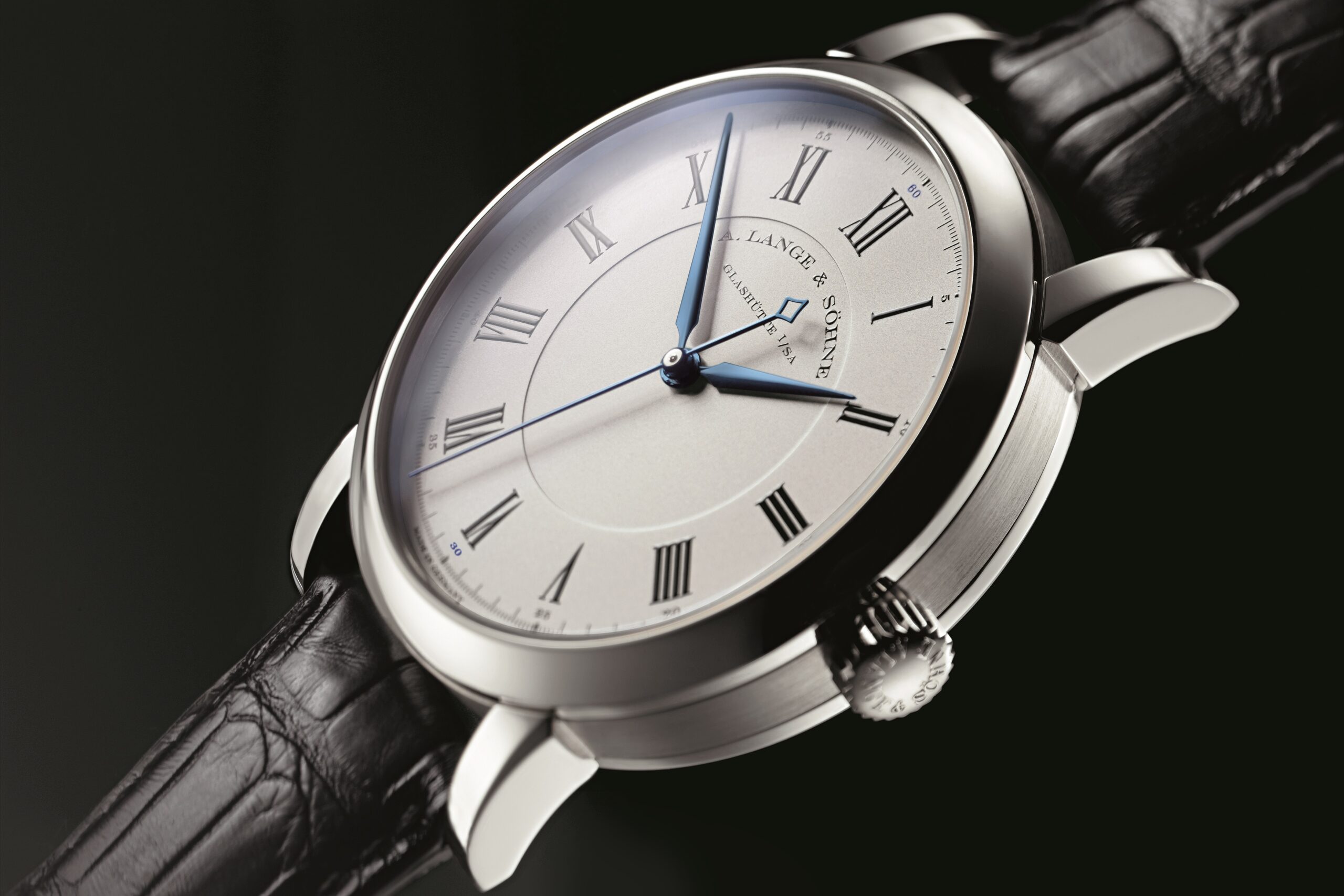
Just exquisite in white gold. Courtesy of Lange Uhren GmbH
The watch wears extremely well on the wrist. Lugs are further curved compared to many other models, thus, hugs the wrist just right. Since the proportions are quite well, and thanks to the curved bezel, Richard Lange easily slides under the cuff.
For the strap, the lug width is 20 mm whereas the buckle is 16 mm. Same as Langematik Perpetual, 40 mm Saxonia Thin, Lange 1 Daymatic or regular Lange 1.
The Richard Lange dial is a masterclass on attention to detail. Contrary to its simple appearance, the model offers a myriad of details for the enthusiast to dive deep and discover. It is an inspired watch, but not in a lazy or re-issue way. It is inspiration adapted right.
If you go to A. Lange & Söhne’s official website and read Richard Lange collection; it tells you that the Richard Lange takes its inspiration from the old pocket watches from the Saxony region. The time only model is based on the Lange Observation Watch No. 83193; which was sold in 1935 to the Zeppelin Yard.
Although correct to an extent; it is not entirely true. The observation watch was actually the inspiration for a little-known, gorgeous special edition made for Wempe in 2005: Große Langematik Gangreserve. As seen above, although the strongest element that is the Roman Numerals are there, they do not share any other similarity. Set on this, I find it more suitable to think that Richard Lange’s design inspiration is actually Lange’s jumping seconds pocket watch for historical and design reasons:
- The watch houses a seconde morte complication; patented by Richard and Emil Lange in 1877; thus, much more related to the eponymous family member than the observation clock.
- It has much more in common with the modern Richard Lange; such as the central seconds hand and the multi-layered dial.
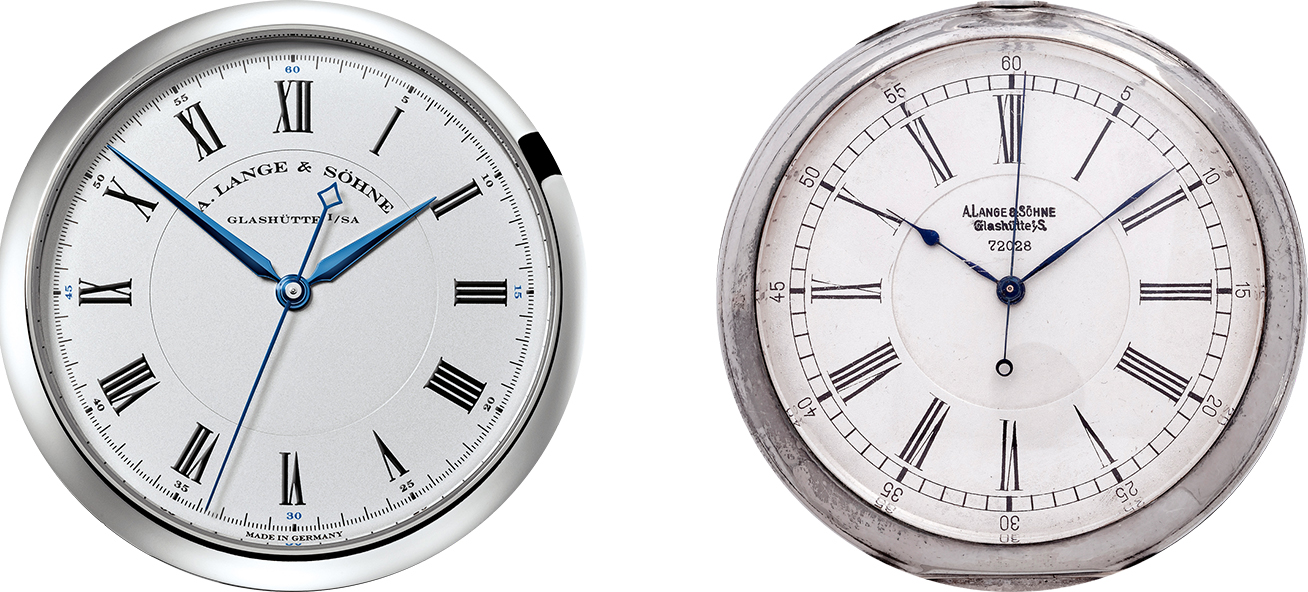
The design of Richard Lange puts legibility and precision in the focus. Since the caliber L041.2 beats at 3Hz, the seconds’ hand ticks 6 times in a second and the outer ring houses matching hashmarks with the beat rate; which in return makes it possible to read the time with an accuracy of 1/6th of a second. Furthermore, each quarter minute marks are additionally shown by Arabic Numerals, and painted in different colors depending on the case material: White gold – blue; yellow gold, pink gold, platinum – red.
Richard Lange is the only watch with central seconds’ hand in Lange’s catalogue.
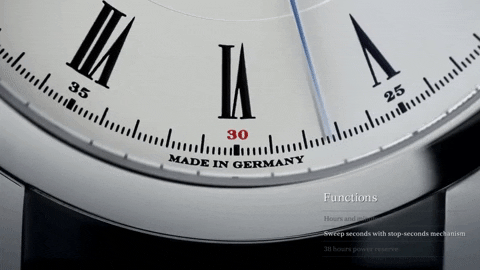
The center portion of the Richard Lange dial is slightly recessed as in the 1815 collection. It is a nice touch and successfully breaks the otherwise stale appearance. The curved logo with a flat-top ampersand and a custom typeface further emphasizes the Lange character; which are crucial in such a simple looking piece.
What makes this watch so great for me is the coherence of all the elements. From the length of the hands to elongated Roman Numerals to the seconds hand’s diamond shaped counterweight sweeping right in between the logo without interference to length of the seconds’ hashmarks, every detail forms an unmistakable character that is distinct, and thoroughly A. Lange & Söhne.
The main difference between the editions of course are the hands. While yellow and pink gold carry the hands made of matching case material; white gold case version bears the blued steel hands whereas the platinum has white gold hands. All models however have the blue central seconds hand.
Caliber L041.2
The ability to merge the traditional elements or motifs with modernity is surely one of the biggest strenghts of A. lange & Söhne. We have witnessed this many times with the Semper Opera inspired big date’s adaptation to Lange 1, or basically with any model of the 1815 collection. What could it be for Richard Lange? In the end, the collection takes its name from a historic figure… How to adapt his achievements and philosophy to a watch? This is where the caliber L041.2 comes into play.
In the international arena Richard Lange (watchmaker) is mainly famous and important for his patent on balance springs. Thus, it was only logical to launch a collection inspired by Richard Lange; with his signature contribution. Even though the production of the balance system requires extensive know-how, A. Lange & Söhne took on this monumental task and succeeded only in 10 years. Following the Double Split (404.035) from 2004, Richard Lange’s caliber L041.2 is the second watch to utilize the in-house balance spring.
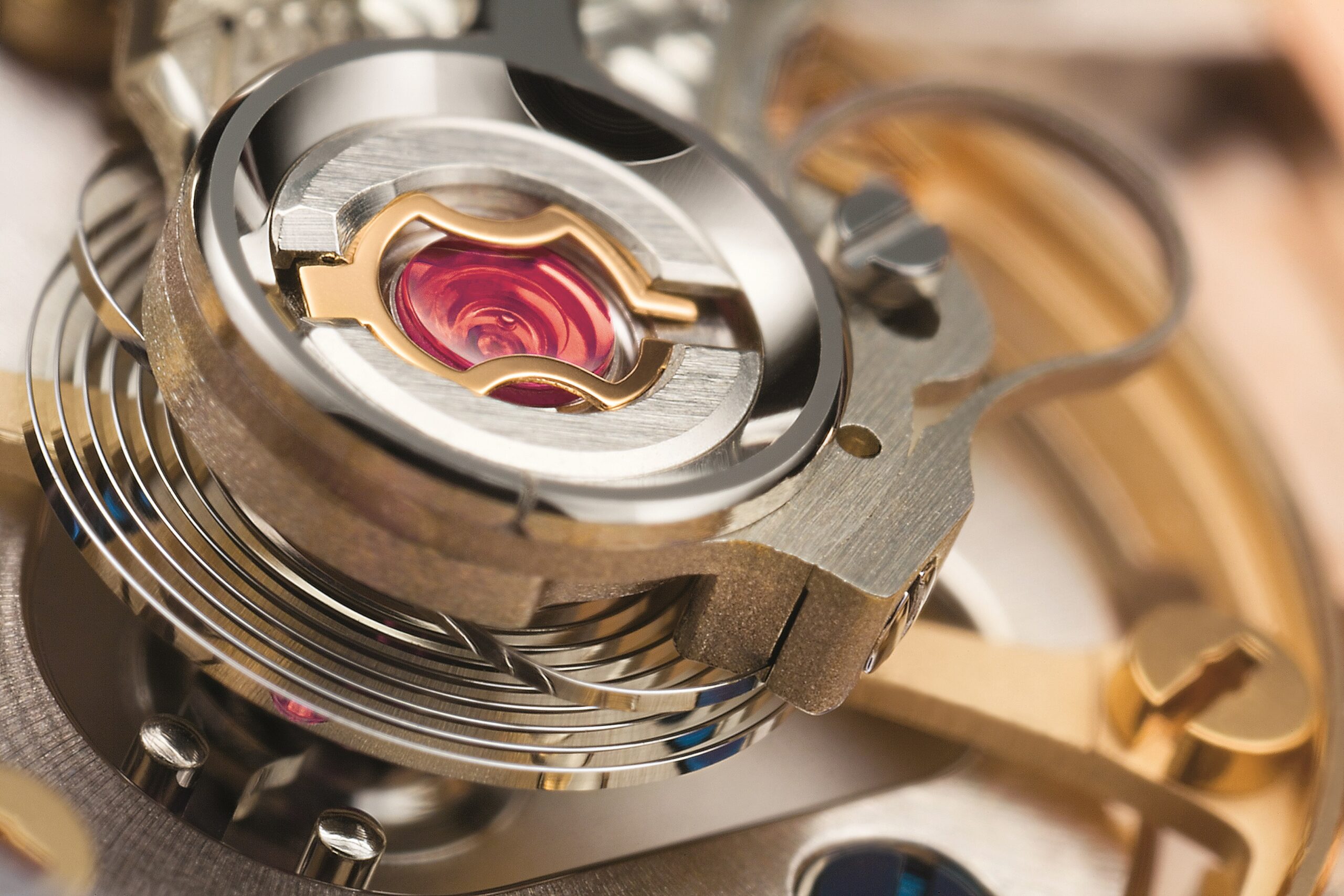
Overcoil, screwed balance. Courtesy of Lange Uhren GmbH
Balance Spring History – Production at A. Lange & Söhne
Balance spring, sometimes referred as hairspring, is the spring you see within the balance wheel. It is the part that causes the wheel to oscillate with a resonant frequency; this in return controls the speed of wheels, thus, the movement of hands. Its invention goes back to 17th century Britain and Netherlands.
Since its inception, many alloys have been developed for balance springs. In the earliest days, the popular material was steel. Yet, the alloy was getting weaker in time, thus causing inaccuracies. Then followed the tempered steel, gold and other alloys. As the search continued some interesting materials were utilized to prevent the nature’s effects on the springs; such as glass which was made by Edward John Dent in the 19th century. It was only with the Nivarox springs invented in the mid 20th century we have reached today’s standards.
Another problem is the balance of the balance spring itself. A balance spring must obey is isochronism, a concept from Robert Hooke, also the inventor of the balance spring. The rule dictates that the restoring torque – the torque which rises to return an object (twisted, rotating, etc.) to its original orientation – should be equal to its angular displacement (the angle through which an object moves on a circular path. It is the angle, in radians, between the initial and final positions).
The most common method to achieve isochronism is the use of Breguet Overcoil; thus, allows the spring to breathe more evenly and symmetrically. Thinking that a balance spring is thinner than a millimeter (at Lange, the thickest is 0.05 mm whereas the thinnest is 0.014 mm); just imagine the level of expertise to catch the isochronism by hand. No wonder that in the old days, regulators were the stars!

Due to extremely tight tolerances, even today, producing balance wheels in-house is a merit that deserves an applause and only few have the capabilities; case in point, one of them is A. Lange & Söhne.
The balance spring starts its life with a thickness of 0.5 mm and is adjusted according to the need by pulling it through diamond dies. Then, the watchmaker assembles separate wires together and starts rolling, thus gives the first shape to the balance spring. So far, all is machinery; you know that boring part where the tour guides do not show you when you visit a manufacture.
Following the rigorous 12 hours of testing, the human hand comes into play. At Lange, a régleur bends the balance wheel’s terminal curve by hand. A job which demands an extreme dexterity and focus. The regleur keeps curving, opening the spring and keeps checking its rotation under the microscope. It is impossible for an un-trained eye to understand the uneven breathing – which can cause 30 minutes of inaccuracy.
When the overcoil is done, the regleur pairs each spring with its own wheel to achieve perfect harmony between the two.
Caliber L041.2 comprises of 199 parts, carries 26 jewels, 2 screwed gold-chatons, and beats at 21,600 per hour – with a hacking function. This is the first and only center seconds movement from A. Lange & Söhne and it comes with a Lange like solution rather than just adding a planetary gear to the movement.
The separate gear train on top of the three-quarter plate is devised to ensure the smooth move of the sweeping seconds hand. A typical solution can be observed at old deck chronometers as well as Vacheron Constantin’s breathtaking Chronometre Royal ref 4907 with the Jaeger-LeCoultre’s 488 ebauche. However, A. Lange & Söhne’s system is a bit different and extremely demanding to ensure the best possible result.
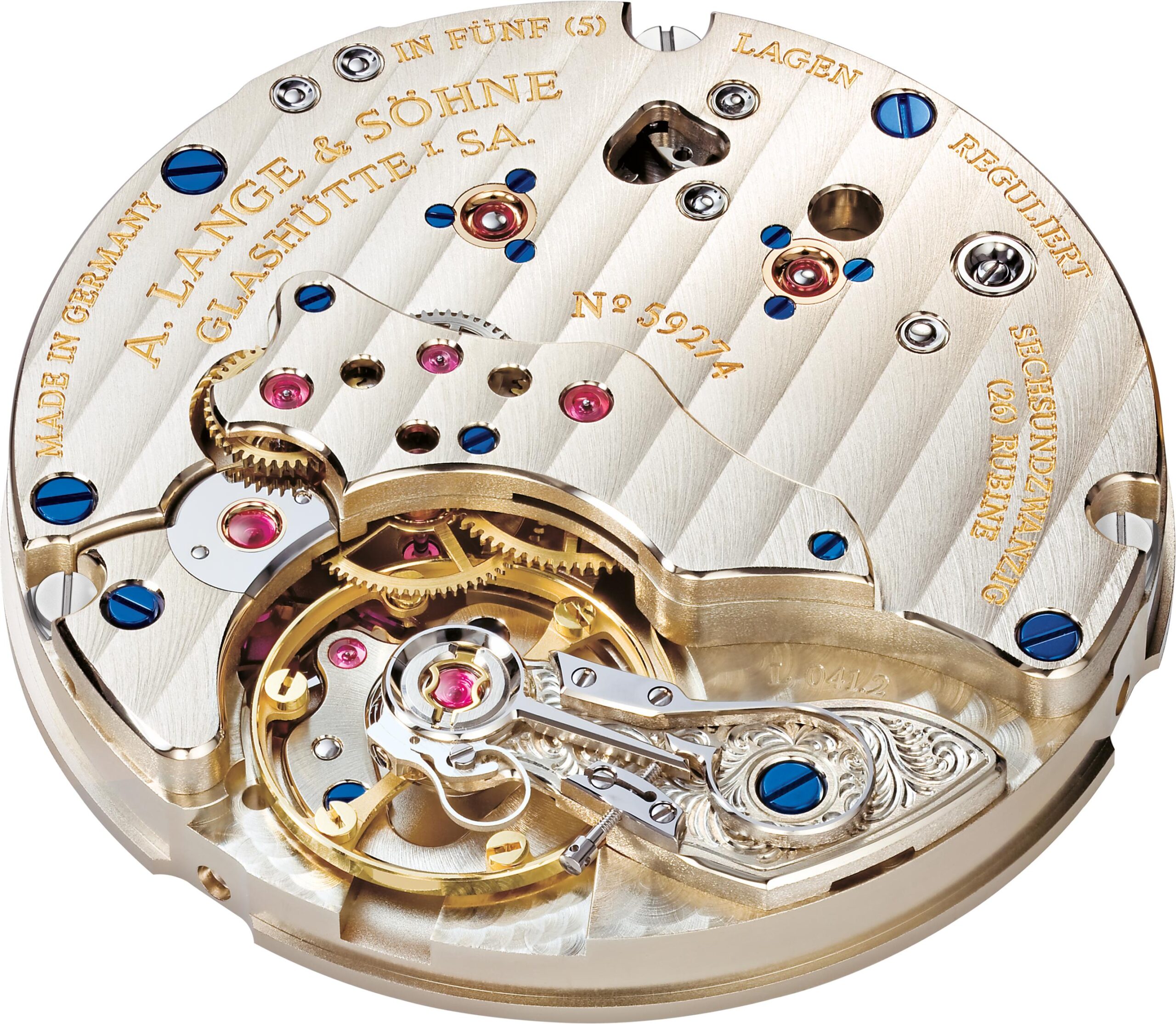
Watchtime Magazine article from 2009 explains the working principle of the movement as follows:
A watch runs on a wheel train, a specifically produced and assembled geared wheels that drives hands and complications. These gears basically transfer the torque from the barrel to escapement and the fourth wheel of the train runs the small seconds hand. Richard Lange, however, does not have a small seconds’ hand. Hence the reason for the bridge above the three-quarter plate: A mechanism that transfers the sub-seconds hand to central hand while making sure that the big seconds’ hand runs as smoothly as possible.
The bridge of the Richard Lange’s caliber L041.2 carries a second fourth-wheel inside the bridge. This wheel is connected to the central wheel of the center seconds’ display, therefore conveys power from the fourth-wheel to the corresponding wheel. However, this was causing shakings with the seconds’ hand. A braking spring idea was originally conceived, much like Grand Seiko’s Spring Drive that ensures 8 ticks per seconds, alas, that did not work too. Simply because the Richard Lange’s seconds’ hand was too large hence the power it needed from the gear-train had a negative effect on the amplitude.
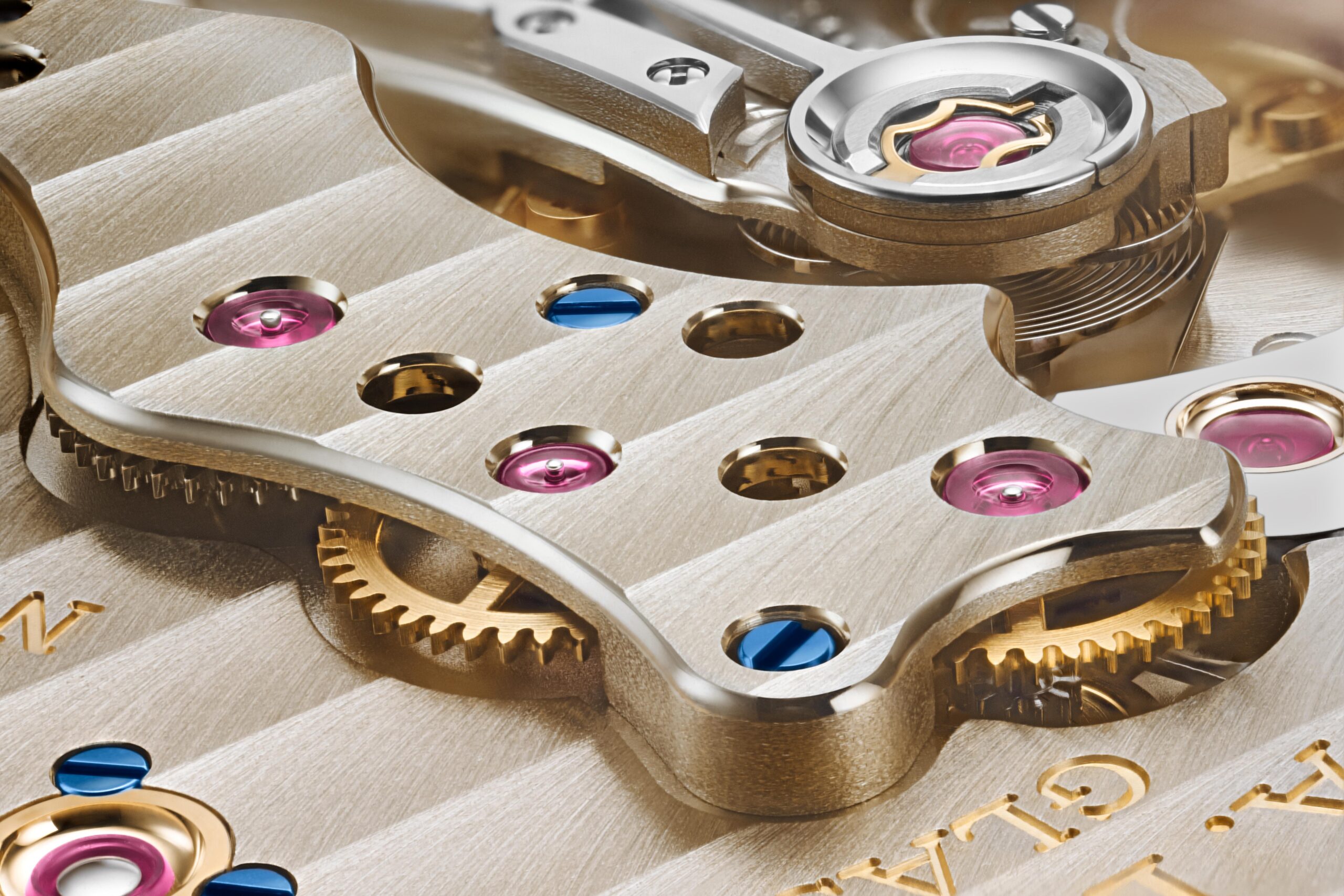
The sweeping-seconds bridge, finished brilliantly. Courtesy of Lange Uhren GmbH
The solution was the two-part idler gear. Two idler gears rotate in opposite directions and carry a spring to provide required tension. Both axis of the gear mesh wth the secondary fourth-wheel (the one in the bridge) and the central seconds’ wheel. The connection between the gears’ teeth with a necessary tension secures that the seconds’ hand runs smoothly as wanted. Moreover, this solution cancels the braking spring, hence ensures that the amplitude is safe.
Although this arrangement adds to the thickness, the distinction it brings is worthy of such small sacrifice. A final note: A rumor is going around for some time about the development of the caliber L041.2 – as the CEO at the time Mr. Fabian Krone said it was so hard to find a solution we were about the scrap the whole project. I have asked about this to Tony De Haas (Product Development Director) and he firmly rejected such claim.
Finishing of Caliber L041.2
Exquisite hand craft was always one of the distinguishing and inseparable pillars of A. Lange & Söhne since 1994. At the time, Mr. Fabian Krone further objectified such notion with a statement:
Lange’s intention to do…on an industrial scale what Dufour does on an artisanal scale.
Indeed, Richard Lange’s L041.2 is a living proof of the analogy and in my opinion is the best finished movement of the brand at its respective price point. The calibre features three sharp outward angles – something that is not much very common on Lange watches unless you are getting a plus $60k piece. The small bridge alone houses three different finish techniques – chamfering, circumferential polishing and ribbing that follows the same line with the three-quarter plate’s.
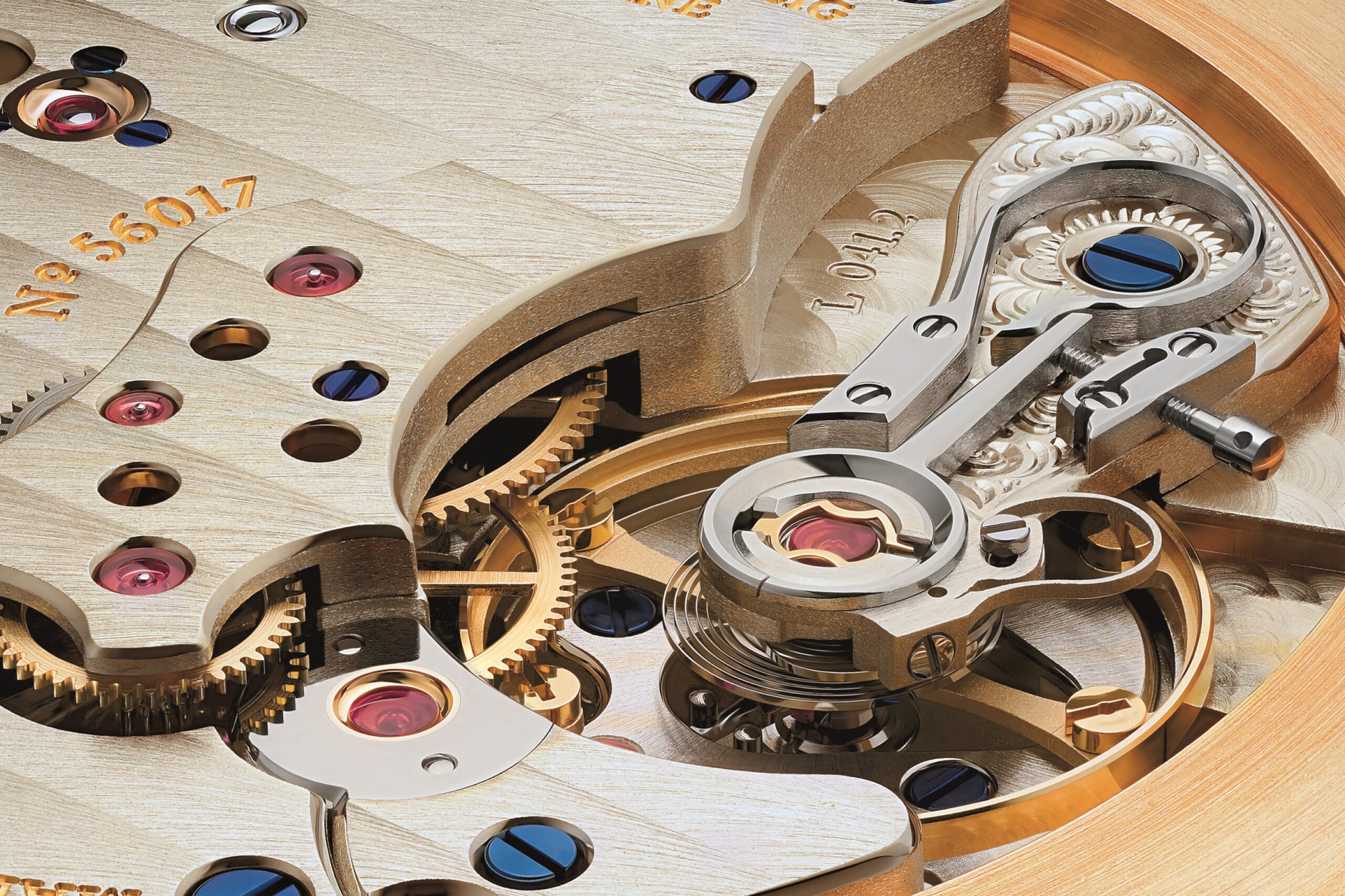
Courtesy of Lange Uhren GmbH
Other signature details such as hand-engraved balance cock, blued screws, gold chatons, flat polished regulator and escape wheel cap construct this one of a kind beauty.
All in all; being a modern interpretation of such an inseparable and important part of A. Lange & Söhne’s history, Richard Lange is a must have for every Lange collector. What is more, from its design to handcraft and character, every version of the time only Richard Lange family presents exquisite value – more so in the secondary market. It is versatile, stunningly beautiful and full of stories to tell – what else?
As always, thank you very much for your time and support.
I hope this was a valuable guide for whomever is looking for a Richard Lange or just want to learn the details and history of these pieces. If you’d like to chat, sell or buy a Richard Lange, please kindly reach out to me via [email protected]
Please feel free to contact:
Follow Langepedia on Instagram:
Watch “A. Lange Story” Documentary, in partnership with WatchBox:
FAMILIES / COMPLICATIONS
STAY IN TOUCH
Sign up for the newsletter to get to know first about rare pieces at Marketplace and in-depth articles added to the encyclopedia, for you to make the most informed choice, and first access!